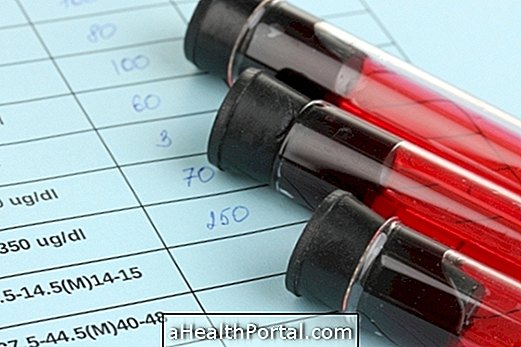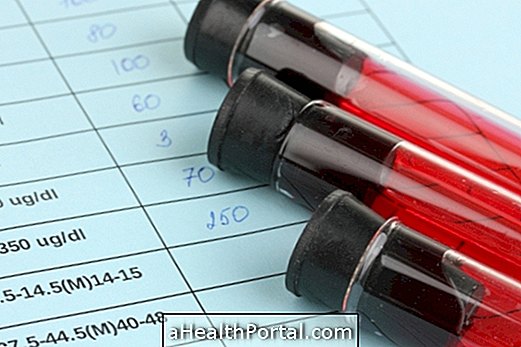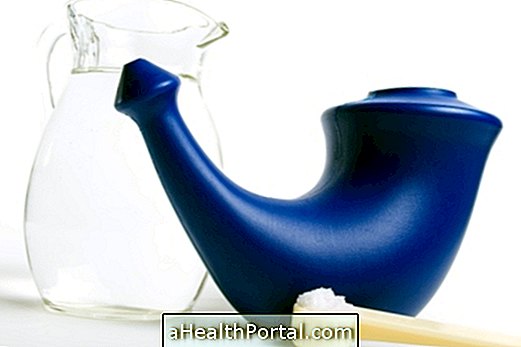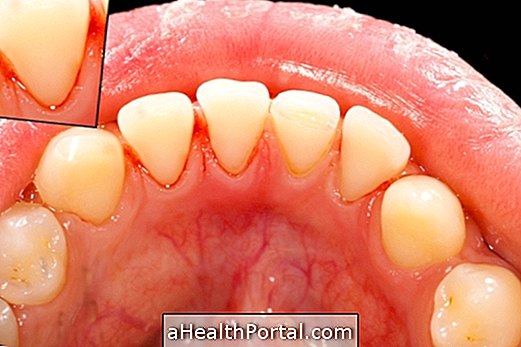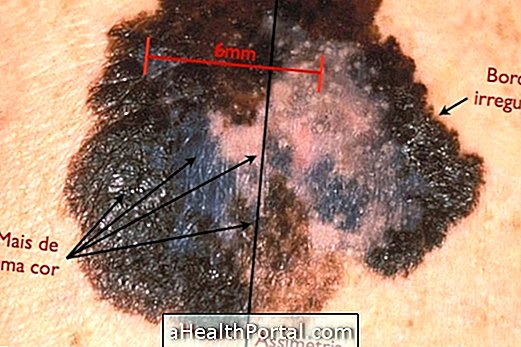Gastric ulcer, also known as peptic ulcer or stomach ulcer, is a wound that forms in the lining of the stomach, caused by a number of factors, such as poor nutrition or H. pylori infection, for example.
She presents as a symptom stomach pain, nausea and vomiting, especially after eating, although she may also have no symptoms for a long time. Usually, the presence of an ulcer is not a very serious condition and should be treated with antacids, which prevent the gastric juice present in the stomach from making the wound even greater.

Common Symptoms
Gastric ulcer generates symptoms such as:
- Severe, stinging abdominal pain that worsens on eating or drinking;
- Burning pain in the "pit of the stomach";
- Nipple;
- Vomiting;
- Headache;
- Bleeding into the wall of the stomach, which can cause blood leakage in the stool, visible or identified in the stool blood test.
It is common for symptoms to become worse after eating, so the appetite may become diminished and cause weight loss.
It is also important to remember that, in addition to the gastric ulcer, a duodenal ulcer may be formed, located in the first part of the intestine, which usually causes symptoms in the fasting or overnight periods.
How to confirm gastric ulcer
To diagnose gastric ulcer, the general practitioner or gastro may request a high endoscopy, after identifying the symptoms that indicate this problem.
To perform this examination, the doctor will place a probe, with a microcamera in the tip, inside the individual's mouth to his stomach, being able to clearly visualize the internal walls of the stomach and its lesions, and being able to perform biopsies of the tissue. Understand how endoscopy is done and how to prepare for the exam.
What are the causes
Gastric ulcer forms when the stomach becomes vulnerable to its own acidity, having its defenses weakened. The possible causes are:
- Genetic factor;
- Use of medicines that affect the defenses of the stomach wall, such as anti-inflammatory drugs or AAS, for example;
- Infection with Helicobacter Pylori bacteria, which multiplies in the stomach and weakens its protective barrier;
- Consumption of alcoholic beverages, which have an irritating effect;
- Stress, a situation that affects the defenses of the stomach mucosa and favors the appearance of symptoms.
In addition, an unbalanced diet, high in fat, sugars and irritative foods such as caffeine or pepper, for example, may aggravate the symptoms and progression of ulcer and other gastric diseases such as reflux. Understand the causes of how an ulcer forms.
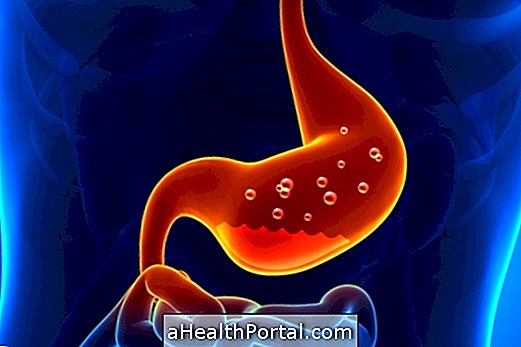
How is the treatment done?
The treatment for gastric ulcer is made with the use of medicines that decrease the acidity of the stomach, such as antacids or acid inhibitors such as Omeprazole, Pantoprazole, Lansoprazole or Esomeprazole, for example, even during pregnancy.
It is also possible to use painkillers, to control the pains, and the painkillers, so that the individual becomes more relaxed, as long as they are properly guided by a doctor. To eliminate H. pylori, when identified in the test, antibiotics such as Amoxicillin and Clarithromycin are used.
Food should be made with cooked fruits, vegetables, grains, light dairy, bread, and lean meats, avoiding very hot foods, alcoholic beverages, soft drinks, sandwiches, fast food, fried foods and sweets in general. Also avoid foods that promote the release of gastric acid, such as coffee, black tea, mate, condiments, spicy sauces and acidic fruits such as cashew, orange, lemon and pineapple. Learn more about what to eat and what not to eat on gastritis and ulcers.
Home Treatment Options
A great home treatment for gastric ulcer is to take the pure juice of one potato per day, preferably fasting, by taking it right after preparation.
The potato is a natural antacid that has no contraindications, very effective in case of gastritis and ulcer. Check out the home remedy for ulcer remedy.











